
Yala National Park: A Wildlife Wonderland in Sri Lanka
Explore Yala National Park, Sri Lanka's wildlife sanctuary, home to leopards, elephants, and ancient ruins, offering an unforgettable safari experience.
Yala National Park, located in the southeast region of Sri Lanka, is a haven for nature lovers and wildlife enthusiasts. Covering an expansive area of over 979 square kilometers, it is the second-largest national park in the country and boasts one of the highest leopard densities in the world. The park's diverse ecosystems range from dense forests and grasslands to lagoons and sandy beaches, each teeming with a variety of flora and fauna. Visitors to Yala can embark on thrilling safari adventures to witness the park's incredible wildlife, including majestic elephants, elusive leopards, sloth bears, and a myriad of bird species. The park is also home to various reptiles and aquatic animals, making each safari a unique and exciting experience. The best time to visit Yala is during the dry season from February to June, when animals are more likely to be spotted near water sources. Besides its wildlife, Yala National Park is rich in cultural heritage, with ancient ruins and rock temples scattered within its boundaries. These historical sites add a layer of intrigue and offer a glimpse into the region's storied past. Whether you're a seasoned wildlife photographer or a curious traveler, Yala National Park promises an unforgettable journey into the heart of Sri Lanka's natural and cultural treasures.
Local tips in Yala National Park
- Book your safari in advance, especially during peak tourist season.
- Early morning and late afternoon safaris offer the best chances of spotting wildlife.
- Wear neutral-colored clothing to blend in with the surroundings and avoid startling the animals.
- Carry plenty of water and snacks, as facilities within the park are limited.
- Respect the wildlife by maintaining a safe distance and not making loud noises.
Yala National Park: A Wildlife Wonderland in Sri Lanka
Yala National Park, located in the southeast region of Sri Lanka, is a haven for nature lovers and wildlife enthusiasts. Covering an expansive area of over 979 square kilometers, it is the second-largest national park in the country and boasts one of the highest leopard densities in the world. The park's diverse ecosystems range from dense forests and grasslands to lagoons and sandy beaches, each teeming with a variety of flora and fauna. Visitors to Yala can embark on thrilling safari adventures to witness the park's incredible wildlife, including majestic elephants, elusive leopards, sloth bears, and a myriad of bird species. The park is also home to various reptiles and aquatic animals, making each safari a unique and exciting experience. The best time to visit Yala is during the dry season from February to June, when animals are more likely to be spotted near water sources. Besides its wildlife, Yala National Park is rich in cultural heritage, with ancient ruins and rock temples scattered within its boundaries. These historical sites add a layer of intrigue and offer a glimpse into the region's storied past. Whether you're a seasoned wildlife photographer or a curious traveler, Yala National Park promises an unforgettable journey into the heart of Sri Lanka's natural and cultural treasures.
When is the best time to go to Yala National Park?
Iconic landmarks you can’t miss
Udawalawe National Park
Discover the rich wildlife and breathtaking landscapes of Udawalawe National Park, a top destination for nature lovers in Sri Lanka.

Cinnamon Wild Yala
Experience the perfect blend of luxury and wildlife adventure at Cinnamon Wild Yala, your gateway to the enchanting Yala National Park.

Victoria Randenigala Rantembe Sanctuary
Explore the breathtaking beauty and diverse wildlife of Victoria Randenigala Rantembe Sanctuary, a must-visit destination for nature lovers in Sri Lanka.

Wilpattu National Park
Discover Wilpattu National Park: A serene escape into Sri Lanka's rich biodiversity and untamed natural beauty, ideal for wildlife enthusiasts and adventure seekers.

Minneriya National Park
Discover the incredible wildlife and breathtaking landscapes of Minneriya National Park, a top destination for nature lovers in Sri Lanka.
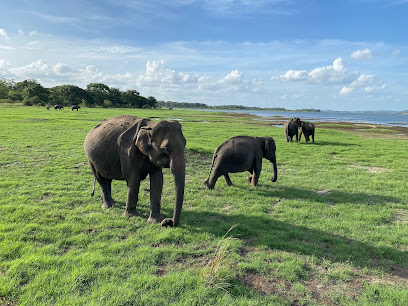
Wirawila Tissa Sanctuary
Immerse yourself in the stunning biodiversity of Wirawila Tissa Sanctuary, a wildlife park that celebrates Sri Lanka's natural beauty and rich ecosystems.
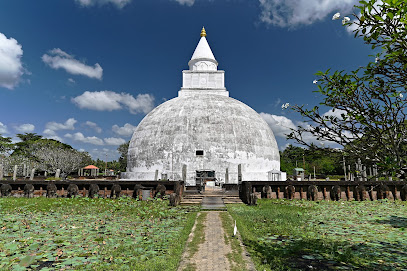
Wasgamuwa National Park
Discover the wild heart of Sri Lanka at Wasgamuwa National Park, where elephants roam free and nature thrives.

Galway's Land National Park
Explore Galway's Land National Park in Nuwara Eliya, a tranquil haven of biodiversity and breathtaking landscapes for nature lovers and adventurers.
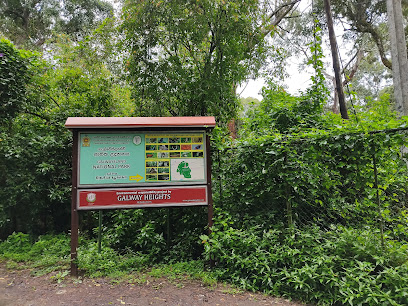
Yala National Park Sri Lanka
Explore the breathtaking wilderness of Yala National Park, Sri Lanka – a sanctuary of extraordinary wildlife and stunning landscapes.
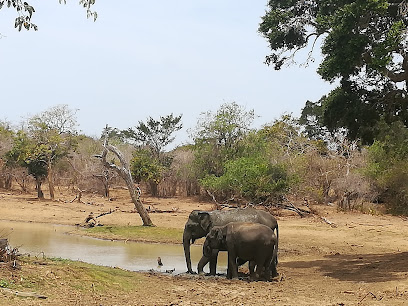
Ritigala Strict Natural Reserve
Explore the natural beauty and rich history of Ritigala Strict Natural Reserve, a unique national park and archaeological gem in Sri Lanka.
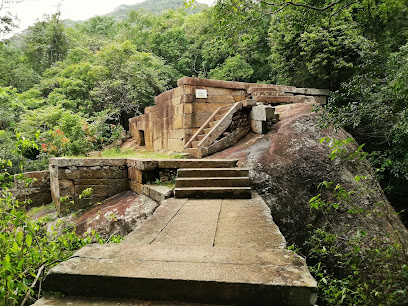
Maduru Oya National Park
Explore the breathtaking landscapes and wildlife of Maduru Oya National Park, a paradise for nature lovers and adventure seekers in Sri Lanka.

Ussangoda National Park
Explore the enchanting Ussangoda National Park, where unique landscapes meet rich biodiversity, perfect for nature lovers and adventure seekers.
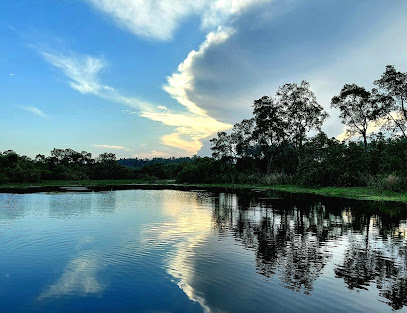
Bundala National Park
Explore the stunning landscapes and rich biodiversity of Bundala National Park, a UNESCO Biosphere Reserve teeming with wildlife and natural beauty.
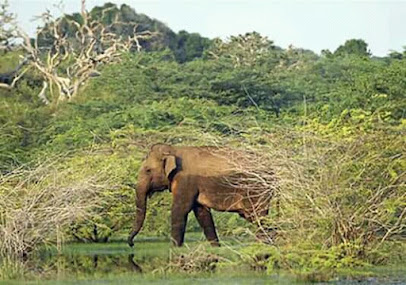
Gal Oya Valley National Park
Explore the pristine wilderness of Gal Oya Valley National Park, where diverse wildlife and stunning landscapes create an unforgettable adventure in Sri Lanka.

Bundala national park
Discover the untouched beauty of Bundala National Park, a sanctuary for migratory birds and wildlife enthusiasts in Sri Lanka.

Unmissable attractions to see
Onadi Yala Safari
Immerse yourself in the breathtaking wildlife and stunning landscapes of Onadi Yala Safari, a must-visit destination in Kataragama, Sri Lanka.

Yala Block I
Explore Yala Block I in Palatupana, a wildlife sanctuary teeming with diverse species and breathtaking landscapes in the heart of Sri Lanka's nature.

Elephants crossing Yala
Explore the breathtaking sight of elephants crossing in Yala National Park, Sri Lanka's premier wildlife destination for unforgettable encounters.

Yala Block II
Discover the breathtaking landscapes and diverse wildlife of Yala Block II, a premier natural park in Sri Lanka, perfect for adventurers and nature lovers alike.

Sri Lankan catering
Experience the vibrant flavors of Sri Lankan cuisine at Sri Lankan Catering, a culinary gem located in Rajapaksa International Airport.

Sajith Tree (සජිත් ගස)
Experience the breathtaking beauty of the ancient Sajith Tree in Kirinda, a stunning natural monument perfect for nature lovers and photographers.

මැණික් ගඟ.
Experience the breathtaking beauty and diverse wildlife of Yala National Park, a premier destination for nature lovers and adventure seekers in Sri Lanka.

Yala Point ~ Center Line Point South
Discover the breathtaking landscapes and rich wildlife of Yala Point, a must-visit attraction in Sri Lanka's renowned Yala National Park.

Yala national park
Discover the wonders of Yala National Park, a breathtaking wildlife sanctuary in Sri Lanka, rich in biodiversity and stunning landscapes.

Andunoruwa Wewa
Experience the serene beauty of Andunoruwa Wewa, a tranquil lake in Yala, perfect for nature lovers and wildlife enthusiasts seeking peace and beauty.

යාල භූතව පිටිය | Buthawa Pitiya
Experience the tranquil beauty of Buthawa Pitiya in Kirinda, a hidden gem perfect for nature lovers and cultural enthusiasts seeking serenity.

Akasha Chaithya Junction
Discover the tranquil beauty and spiritual essence of Akasha Chaithya Junction in Situlpawwa, a must-visit tourist attraction in Sri Lanka.

අගිල් වල | Agil Wala | விரல்களில்
Discover the breathtaking beauty and cultural richness of Agil Wala in Kirinda, a true gem of Sri Lanka's coastline.

Essential places to dine
Cinnamon Wild Yala
Discover unparalleled luxury and immerse yourself in nature at Cinnamon Wild Yala, adjacent to Sri Lanka's renowned wildlife sanctuary.

Jetwing Yala
Discover unparalleled luxury amidst nature at Jetwing Yala – your gateway to Yala National Park's stunning wildlife.

Refresh Seafood Restaurant
Experience authentic Sri Lankan seafood at Refresh Seafood Restaurant in Tissamaharama – where every bite tells a story.

EKHO Safari Tissa
Discover serenity and adventure at EKHO Safari Tissa - your gateway to Yala National Park's breathtaking wildlife.

The Flavors Restaurant
Discover the authentic taste of Sri Lanka at The Flavors Restaurant in Tissamaharama – where every dish tells a story.

Wild Coast Tented Lodge - Relais & Chateaux
Discover unparalleled luxury at Wild Coast Tented Lodge, where pristine nature meets exquisite comfort near Yala National Park.

Smoky Kitchen
Experience authentic Sri Lankan flavors at Smoky Kitchen in Tissamaharama – where tradition meets taste!
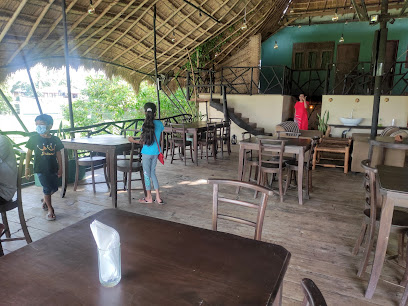
Uga Chena Huts
Discover luxury and wildlife harmony at Uga Chena Huts near Yala National Park – an eco-friendly paradise for nature lovers.

Laya Safari
Discover unparalleled comfort and breathtaking wildlife experiences at Laya Safari Resort near Yala National Park.

Oak Ray Wild Yala
Experience nature's wonder at Oak Ray Wild Yala – your gateway to unforgettable wildlife adventures in Sri Lanka.

Elephant Reach Hotel
Discover comfort and adventure at Elephant Reach Hotel near Yala National Park – your gateway to Sri Lanka's breathtaking wildlife.

Yala Peace Cottages & Restaurant
Discover tranquility and local flavor at Yala Peace Cottages & Restaurant in Tissamaharama - your gateway to Sri Lanka's stunning wildlife.

Hungry Monkey
Experience authentic Sri Lankan cuisine at Hungry Monkey in Udawalawa – where every meal tells a story.

Camp Leopard - Yala Safari Glamping
Discover luxury glamping amidst wildlife at Camp Leopard near Yala National Park – an unforgettable adventure awaits!

Yala Safari Camping
Discover Yala Safari Camping: Your Gateway to Unforgettable Wildlife Adventures in Sri Lanka's Stunning National Park.
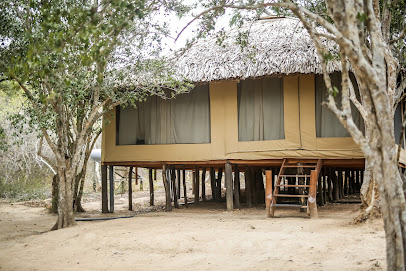
Markets, malls and hidden boutiques
Yala National Park Sri Lanka
Discover the breathtaking wildlife and stunning landscapes of Yala National Park, a must-visit destination in Sri Lanka for nature lovers and adventure seekers.

Wild Coast Tented Lodge - Relais & Chateaux
Discover the perfect blend of luxury and nature at Wild Coast Tented Lodge, your gateway to Yala National Park's rich wildlife and stunning landscapes.

Cargills Food City (Express) - Kataragama
Explore the vibrant flavors of Sri Lanka at Cargills Food City, a supermarket offering fresh produce and local specialties in Kataragama.

Yala National Park - Katagamuwa Entrance
Uncover the captivating wildlife and breathtaking landscapes of Yala National Park, Sri Lanka's premier destination for nature lovers and adventurers.

Yala National Park
Explore Yala National Park: Sri Lanka's premier wildlife sanctuary rich in biodiversity and unforgettable safari experiences.

Chill Bay Ella
Discover unique clothing and artisanal souvenirs at Chill Bay Ella, your go-to shop for a taste of Sri Lanka's vibrant culture.

Wild Culture Yala
Discover luxurious comfort and authentic Sri Lankan culture at Wild Culture Yala, your gateway to the wonders of Yala National Park.

Dinuda Sweets
Experience the sweetness of Kataragama at Dinuda Sweets, your go-to candy store for local and international treats.

Leopard Safaris Yala
Discover the wonders of Yala National Park with an exceptional boutique safari experience at Leopard Safaris Yala, where luxury meets nature.

Manu Yala Safari tours
Experience the thrill of wildlife safaris at Manu Yala, where adventure meets breathtaking landscapes and diverse wildlife in Sri Lanka.

Tharindu toys & fancy
Discover a magical world of toys at Tharindu Toys & Fancy in Sella Kataragama, where imagination knows no bounds.

Vilasitha
Explore Vilasitha in Kataragama, where local fashion meets unique style in a charming clothing boutique.

අරඹගේ ස්ටෝරස්
Explore the authentic flavors of Sri Lanka at Arambage Stores, your go-to grocery destination for fresh local produce and delightful snacks.

Mayura Trade Center & Phone Shop
Discover unique gifts, electronics, and accessories at Mayura Trade Center, your one-stop shop in Kataragama for an unforgettable shopping experience.

Teddy Shop - Tissa
Explore the Teddy Shop in Tissamaharama for unique gifts and heartfelt souvenirs that embody the spirit of Sri Lanka.

Essential bars & hidden hideouts
Dinujaya wine stores
Discover the charm of Dinujaya Wine Stores, a delightful bar in Tissamaharama offering an exquisite selection of wines and a warm atmosphere for relaxation.

Sky Lounge Bar
Discover the stunning views and exquisite cocktails at Sky Lounge Bar in Kumbalwela, the perfect retreat for travelers seeking relaxation.

Funky de bar
Experience the vibrant nightlife of Pottuvil at Funky de Bar, where eclectic vibes and refreshing drinks meet local culture.

Ranketha Restaurant & Bar
Experience the vibrant culinary scene at Ranketha Restaurant & Bar, where local flavors meet a lively atmosphere in the heart of Sri Lanka.

Suranga Restaurant & Bar
Discover the perfect blend of local and international flavors at Suranga Restaurant & Bar in Thanamalwila, where great food meets a vibrant atmosphere.

Lahiru Indunil Magama,Tissamaharamaya.....
Experience the vibrant atmosphere of Lahiru Indunil Magama, a top bar in Tissamaharamaya serving delightful drinks and local culture.

Bar
Unwind in Debarawewa's charming bar, offering a delightful selection of drinks and a warm atmosphere perfect for relaxation and socializing.
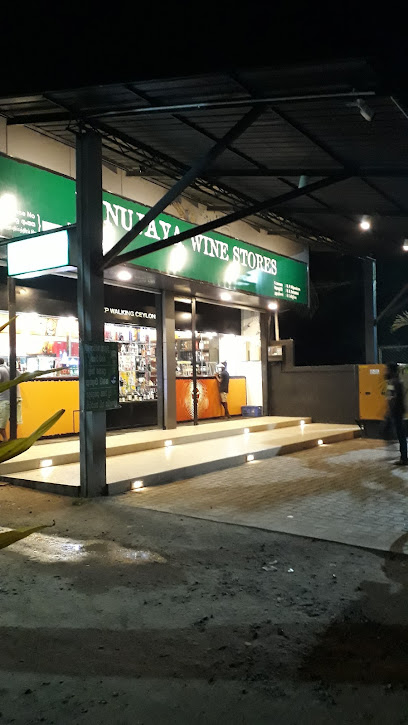
Yala Safari In
Explore the vibrant wildlife and scenic landscapes of Sri Lanka at Yala Safari In, a premier destination for nature lovers and adventure seekers.

Dam Restaurant & Bar
Experience the vibrant nightlife and delicious offerings at Dam Restaurant & Bar, a must-visit destination in Lunugamwehera.

Sunil Cool Spot
Experience the authentic flavors of Sri Lanka at Sunil Cool Spot, a cozy restaurant offering local dishes along the Kataragama-Situlpawwa Road.
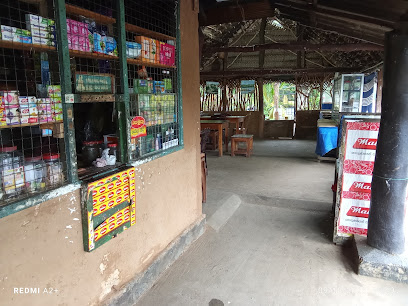
Happy Kent Resaurant & Bar
Experience the vibrant flavors and lively atmosphere at Happy Kent Restaurant & Bar in Tissamaharama, a must-visit for every traveler.

The Yala Camping
Discover the beauty of Yala National Park at The Yala Camping, where adventure meets tranquility in a stunning natural setting.

Sunils Safari Lodge
Discover the flavors of Sri Lanka at Sunils Safari Lodge, a charming restaurant in Kataragama, offering authentic dishes in a welcoming atmosphere.

Tessa
Discover Tessa, the vibrant bar in Kataragama where locals and tourists converge for unforgettable drinks and lively social experiences.

Junction wel fanta
Explore the vibrant atmosphere of Junction Wel Fanta in Tissamaharama, where great drinks and local culture blend seamlessly.

Local Phrases about Yala National Park
-
- Helloහෙලෝ
[helo] - Goodbyeසුරංගනා
[surangana] - Yesඔව්
[ow] - Noනෑ
[ne] - Please/You're welcomeකරන්න
[karanna] - Thank youස්තූතියි
[sthuthiyi] - Excuse me/Sorryකුමාරයා
[kumaraya] - How are you?ඔයා කොහේ තියා?
[oyā kohē tiyā?] - Fine. And you?මම හොයාගන්න. ඔයා?
[mama hōyāganna. oyā?] - Do you speak English?ඔයා ඉංග්රීසි කතා කරනවාද?
[oyā iṅgrīsi kathā karanavāda?] - I don't understandමට දැනෙනවාද?
[mata dānēnavāda?]
- Helloහෙලෝ
-
- I'd like to see the menu, pleaseමං මෙනු බලන්න ප්රධානත්තාවට
[maṁ menu balanna pradānaththāwat] - I don't eat meatමං මෙත් කෑම කරන්නේන්
[maṁ meṭ kāma karannēn] - Cheers!අයියෝ!
[ayyo!] - I would like to pay, pleaseමං ගෙවන්නේන්
[maṁ gevannēn]
- I'd like to see the menu, pleaseමං මෙනු බලන්න ප්රධානත්තාවට
-
- Help!උක්කනෙනවා!
[ukkanēnavā!] - Go away!ඉයිනවා!
[iyinavā!] - Call the Police!පොලිස් කොල්ලනෙනවා!
[polis kollanavā!] - Call a doctor!වෛරයාග කොල්ලනෙනවා!
[vārayāga kollanavā!] - I'm lostමං අත්තනවා
[maṁ atthanavā] - I'm illමං රෝගිකෙනවා
[maṁ rōgikenavā]
- Help!උක්කනෙනවා!
-
- I'd like to buy...මං වෙනසෙන් වෙන්නෙන්
[maṁ vēnasen venen] - I'm just lookingමං දන්නෙන්
[maṁ danen] - How much is it?එයාලා කොහෙද?
[eyālā koheda?] - That's too expensiveඑයාලා තිහිකෙන්න
[eyālā tihikenna] - Can you lower the price?මිට්ටුවොන්න
[mittuwonnen]
- I'd like to buy...මං වෙනසෙන් වෙන්නෙන්
-
- What time is it?කොහෙද?
[koheda?] - It's one o'clockඑකට
[ekata] - Half past (10)දෙවල් සත්
[devaḷ sat] - Morningප්රතාදර්වය
[prathādarwaya] - Afternoonපසළ්
[pasal] - Eveningවෙල්ලා
[wella] - Yesterdayඊයේ
[īyē] - Todayඅද
[ada] - Tomorrowහෙට
[heta] - 1එක
[eka] - 2දෙක
[deka] - 3තුන
[thuna] - 4හතල්
[hatal] - 5පහ
[paha] - 6හය
[haya] - 7හත
[hatha] - 8අට
[ata] - 9නත
[nata] - 10දහවල්
[dahavala]
- What time is it?කොහෙද?
-
- Where's a/the...?කොහෙද?
[koheda?] - What's the address?ලිපිනය කුමක්ද?
[lipinaya kumakda?] - Can you show me (on the map)?මිට්ටුවොන්න
[mittuwonnen] - When's the next (bus)?ඊතලට?
[ītalata?] - A ticket (to ....)ටිකට් එකත්
[tikat ekath]
- Where's a/the...?කොහෙද?
History of Yala National Park
-
Yala National Park is located in the southeastern region of Sri Lanka, an area that was once part of the ancient Ruhuna Kingdom. Dating back to the 3rd century BCE, the Ruhuna Kingdom was one of the earliest and most prosperous civilizations in Sri Lanka, known for its advanced irrigation systems and thriving agricultural economy. The park today is dotted with ancient ruins, including temples and irrigation tanks, which serve as a testament to the region's rich historical heritage.
-
Nestled within Yala National Park is the Situlpawwa Monastery, a site of great religious and historical significance. Thought to have been established over 2,200 years ago, this ancient Buddhist monastery was a center for meditation and learning. The monastery complex includes rock caves, stupas, and inscriptions that offer a glimpse into the spiritual life of ancient Sri Lanka. Situlpawwa continues to be a place of pilgrimage for Buddhists, attracting both locals and visitors from around the world.
-
During the British colonial period in the 19th century, Yala was designated as a game reserve. The British were avid hunters, and the area was preserved primarily for the sport of hunting big game such as elephants, leopards, and buffalo. This colonial legacy has had a lasting impact on the park, influencing its conservation policies and the way it is managed today. The transition from a hunting reserve to a protected national park marked a significant shift towards conservation and wildlife protection.
-
Yala was officially designated as a national park in 1938, becoming one of Sri Lanka's first national parks. This designation was crucial in protecting the area's unique biodiversity, which includes a wide range of flora and fauna. The park is particularly famous for its high density of leopards, making it one of the best places in the world to spot these elusive big cats. The establishment of the national park has played a key role in preserving its natural beauty and wildlife for future generations.
-
In recent decades, Yala National Park has become a focal point for conservation efforts in Sri Lanka. Various local and international organizations have been involved in initiatives aimed at protecting the park's diverse ecosystems and wildlife. These efforts include anti-poaching measures, habitat restoration projects, and community engagement programs aimed at promoting sustainable tourism. The park's management continues to evolve, balancing the needs of wildlife conservation with the growing popularity of eco-tourism.
Yala National Park Essentials
-
Yala National Park is located in the southeastern region of Sri Lanka. The nearest airport is Mattala Rajapaksa International Airport, approximately 50 kilometers away. Alternatively, Bandaranaike International Airport in Colombo is about 300 kilometers from the park. From either airport, you can hire a taxi or rent a car to reach Yala. Public buses and private coaches also operate from major cities like Colombo, Galle, and Kandy to Tissamaharama, a town close to the park's entrance. The journey by road from Colombo takes about 5-6 hours.
-
Within Yala National Park, the primary mode of transportation is safari jeeps, which are necessary for navigating the park's rugged terrain. These jeeps can be hired with a guide from the park entrance or through your accommodation. For travel outside the park, taxis and tuk-tuks are readily available in nearby towns like Tissamaharama and Kataragama. Renting a car is also an option if you prefer to explore the surrounding areas at your own pace.
-
The official currency in Sri Lanka is the Sri Lankan Rupee (LKR). Credit cards are accepted in most hotels, restaurants, and larger shops, but it is advisable to carry cash for smaller establishments and in rural areas. ATMs are available in Tissamaharama and Kataragama, so you can withdraw cash before entering the park. Note that there are no ATMs within Yala National Park itself.
-
Yala National Park is generally safe for tourists, but it's important to take standard precautions. Avoid walking alone at night in unfamiliar areas, and always be aware of your surroundings. While there are no specific high-crime areas targeting tourists near the park, petty theft can occur, so keep your belongings secure. Always follow the park rules and guidelines, as Yala is home to wild animals, including leopards and elephants.
-
In case of emergency, dial 119 for police assistance or 110 for medical emergencies. It's advisable to have travel insurance that covers medical emergencies. The nearest hospitals are in Tissamaharama and Kataragama, both of which have basic medical facilities. For minor health issues, there are pharmacies in the nearby towns. Park rangers and guides are trained to handle emergencies within the park and can provide immediate assistance if needed.
-
Fashion: Do wear light, breathable clothing in neutral colors to blend with the environment. Avoid bright colors and strong perfumes, which can attract insects and animals. Religion: Do respect local customs and traditions, especially in nearby religious sites like the Kataragama Temple. Dress modestly and remove your shoes when entering religious sites. Public Transport: Do be respectful and give up your seat to elderly passengers. Don't eat or drink on public transport. Greetings: Do greet people with a smile and a slight bow of the head. A handshake is also acceptable. Eating & Drinking: Do try local delicacies and accept food offerings graciously. Don't refuse hospitality, as it is considered impolite.
-
To experience Yala National Park like a local, consider booking a safari with a local guide who can provide in-depth knowledge about the park's flora and fauna. Visit the nearby towns of Tissamaharama and Kataragama to experience local culture and cuisine. Early morning and late afternoon safaris are the best times for wildlife sightings. Don't miss the opportunity to see the park's famous leopards, and always listen to your guide's instructions for the best experience.
Trending Landmarks in Yala National Park
-
Udawalawe National Park
-
Cinnamon Wild Yala
-
Victoria Randenigala Rantembe Sanctuary
-
Wilpattu National Park
-
Minneriya National Park
-
Wirawila Tissa Sanctuary
-
Wasgamuwa National Park
-
Galway's Land National Park
-
Yala National Park Sri Lanka
-
Ritigala Strict Natural Reserve
-
Maduru Oya National Park
-
Ussangoda National Park
-
Bundala National Park
-
Gal Oya Valley National Park
-
Bundala national park
Nearby Cities to Yala National Park
-
Things To Do in Nuwara Eliya
-
Things To Do in Matara
-
Things To Do in Mirissa
-
Things To Do in Kandy
-
Things To Do in Unawatuna
-
Things To Do in Galle
-
Things To Do in Hikkaduwa
-
Things To Do in Bentota
-
Things To Do in Polonnaruwa
-
Things To Do in Sigiriya
-
Things To Do in Colombo
-
Things To Do in Negombo
-
Things To Do in Anuradhapura
-
Things To Do in Trincomalee
-
Things To Do in Jaffna










